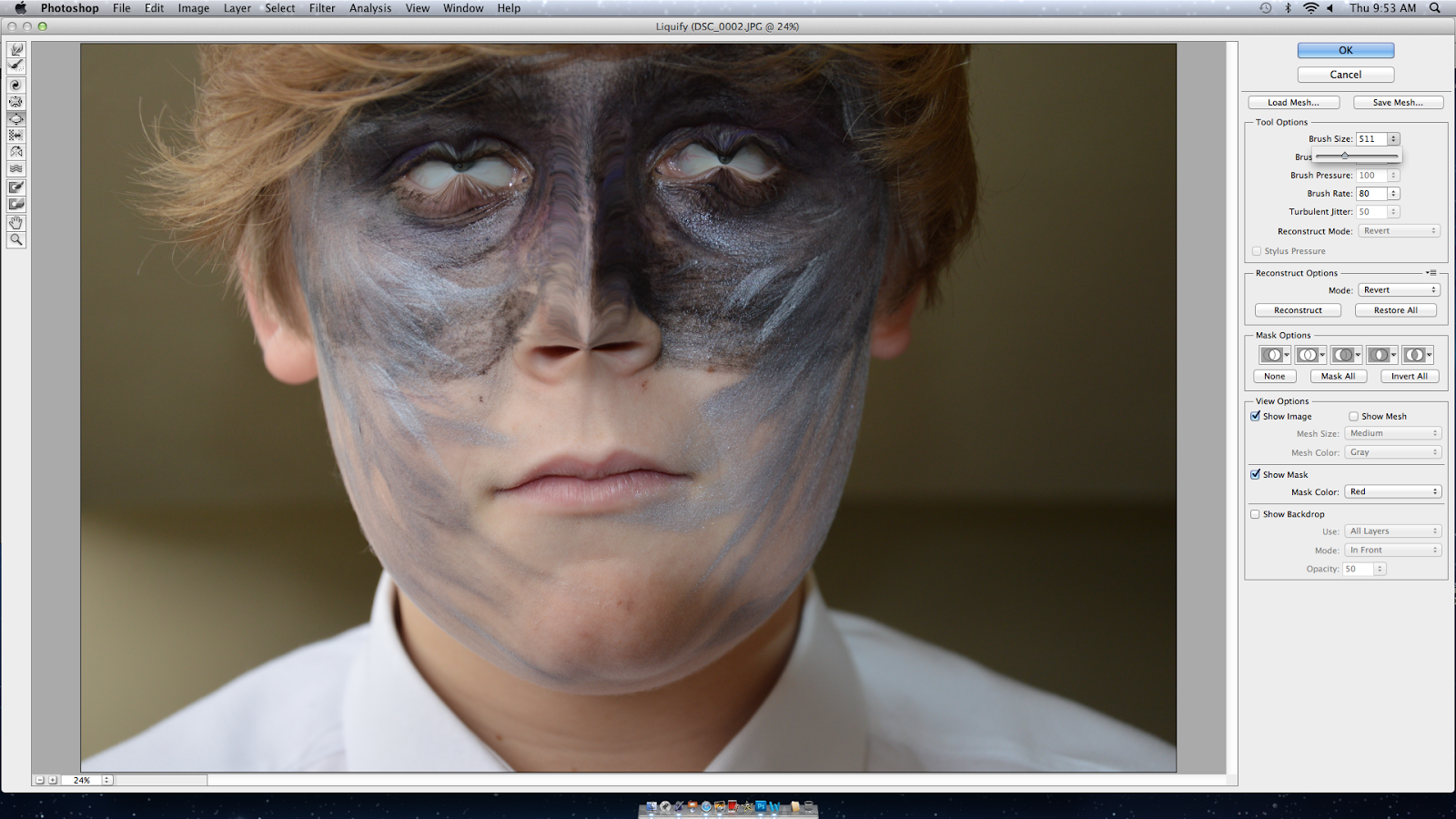Francis Bacon painted people how he saw them (not literally) but you can see his thoughts reflected onto the art. He uses colours that could possibly reflect the person.
there seems to be a variety of paints that have been applied. This helps give the designed textures which usually look quite raw. I don't think he spent much time smoothing out the paint and instead tried to get everything in his mind onto the paper. When I see his paintings I don't feel sad or confused, more intrigued to know what was going on inside his head at the time.
Here is my own photo in the style of Francis Bacon along with some screen shots of the process.
I altered the contrast and saturation to make the colors more obvious and bright. The colours in Francis Bacons photographs are very important as they portray the emotion.
I used the Liquify tool to create all of the different distortions, changing my brushes to pinch, bloat, stretch and twist helped to create a variety of effects.










